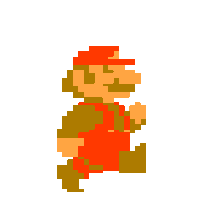The Greatest Video Game Mascots: A Journey Through Gaming History
In the world of video game icons, mascots hold a special place in the hearts of players worldwide. These characters do more than just lead their respective franchises; they embody the spirit of their creators, representing innovation, adventure, and the joy of gaming itself. This blog post delves into the history and origins of some of the greatest video game mascots, highlighting a Top 5 list that has left an indelible mark on the industry. Furthermore, we will explore the nuanced differences between company mascots and franchise mascots, and share the intriguing story of how Sega transitioned from Alex Kidd to Sonic the Hedgehog as their flagship character.
The Evolution of Video Game Mascots
Video game mascots have evolved from simple pixelated characters to complex personalities with deep lore and expansive worlds. They often serve as the face of a gaming franchise or even a video game company, symbolising their brand identity in the competitive entertainment market.
Company Mascots vs. Franchise Mascots
Understanding the distinction between company mascots and franchise mascots is key to grasping their impact on the gaming industry. Company mascots, such as Nintendo's Mario and Sega's Sonic the Hedgehog, serve as the face of their respective corporations, embodying the company ethos across various platforms and genres. Mario, for instance, not only stars in his own series but also represents Nintendo in sports titles, party games, and crossovers like "Super Smash Bros." Conversely, franchise mascots are synonymous with a specific game series, focusing on the identity of that franchise rather than the broader company. Characters like Link from "The Legend of Zelda" and Kratos from "God of War" are prime examples, as their adventures, challenges, and development are deeply intertwined with the lore and appeal of their respective series. These distinctions highlight the versatile roles mascots play in connecting with audiences and promoting their brands.
Sega's Mascot Evolution: From Alex Kidd to Sonic
A fascinating example of mascot evolution is Sega's transition from Alex Kidd to Sonic the Hedgehog. Initially, Sega hoped Alex Kidd, introduced in 1986 with "Alex Kidd in Miracle World," would become their answer to Nintendo's Mario. Despite the game's success, Alex Kidd didn't capture the global audience's imagination in the way Sega had hoped. In the early 1990s, as the video game industry rapidly evolved, Sega realised they needed a character with more appeal and attitude to compete effectively against Nintendo's dominance.
Enter Sonic the Hedgehog in 1991. With his cool demeanor, distinctive blue spikes, and lightning-fast speed, Sonic became an instant icon, embodying the edgier and more fast-paced gaming experience that Sega wanted to promote. Sonic's success not only established him as Sega's undisputed mascot but also significantly influenced the direction of future video games, emphasising speed, attitude, and a punk-rock ethos.
Top 5 Greatest Video Game Mascots
1. Mario
No list of video game mascots would be complete without Mario, the quintessential video game icon. Created by Shigeru Miyamoto and introduced by Nintendo in the 1980s, Mario has become synonymous with video gaming itself. From his humble beginnings in "Donkey Kong" to the groundbreaking "Super Mario" series, Mario's adventures have captivated players for generations. He represents not just a franchise but the entire gaming industry, showcasing the evolution of video games from simple arcade entertainment to complex, story-driven experiences.
2. Pac-Man
Pac-Man, the dot-munching character from Namco, revolutionised gaming in the 1980s and became a cultural phenomenon. With its simple yet addictive gameplay, Pac-Man appealed to a broad audience, transcending the boundaries of traditional video gaming. Its success led to numerous sequels, merchandise, and even an animated TV series, cementing Pac-Man's place as one of the most recognisable video game characters in history.
3. Sonic the Hedgehog
As Sega's flagship mascot, Sonic the Hedgehog brought a new level of attitude and speed to video gaming. His debut in 1991 marked a turning point for Sega, challenging Nintendo's dominance and sparking a fierce rivalry that defined the gaming landscape of the 1990s. Sonic's games emphasised fast-paced gameplay and vibrant worlds, traits that have endured in his numerous adventures across various gaming platforms.
4. Crash Bandicoot
Crash Bandicoot, the wacky marsupial created by Naughty Dog and introduced on the PlayStation in the mid-1990s, quickly became Sony's unofficial mascot. Designed to compete with Mario and Sonic, Crash's games featured a unique blend of platforming challenges, humor, and distinct Australian influences. Crash Bandicoot's success helped establish the PlayStation brand, proving that Sony could hold its own in the mascot-led gaming industry.
5. Mega Man
Capcom's Mega Man, also known as Rockman in Japan, debuted in the late 1980s and became an instant classic. The series is known for its challenging gameplay, futuristic settings, and the ability of the titular character to acquire the powers of defeated robot masters. Mega Man's enduring popularity has spawned numerous sequels, spin-offs, and adaptations, making him a beloved mascot not just for Capcom but for the entire gaming community.
Conclusion
Video game mascots are more than just characters; they are the soul of their respective games and franchises, embodying the creativity, passion, and innovation of the gaming industry. From the platforming genius of Mario to the speedy adventures of Sonic the Hedgehog, these mascots have not only defined their franchises but have also played a significant role in shaping the cultural landscape of video gaming. As the industry continues to evolve, these iconic characters will forever remain at its heart, reminding us of the magical worlds and unforgettable adventures that video games provide.






